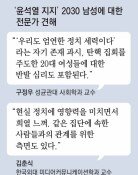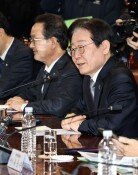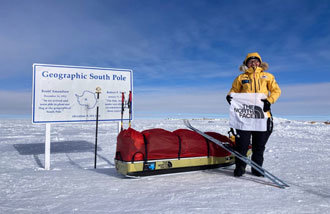Soot, Graffiti, Unrest
On the afternoon of October 21, an ominous silence, similar to the eye of a storm, gripped the building of the Korean Fishery Federation in the coastal county of Buan, North Jeolla Province.
Burnt cars and tires attested to the fierce rally held a few days ago, and there were graffiti on walls and roads in red spray paint saying, Nuclear is death.
Riot police were standing around every public building, and local residents gathered in groups and talked with concern about the developing situation.
At dusk, the whole town was under enormous tension as people were worried that arson fires in public buildings might repeat.
Cho, a taxi driver at Buan, handed out protest flyers of the local protest organization against a nuclear waste storage facility. At night, the downtown reminds me of the Gwangju uprising, said Cho. I dont drive near the Fisheries Federation building where the candlelight vigil is held. I just drive around outskirts of the town of Buan. In 1980, the massive democratic uprising occurred in Gwangju against the military rulers.
Cho said he participated in the rally waged on Wednesday on the Seohaean Expressway, which runs along the western coast. At first, riot policemen were like my own sons, but when I saw them beating an older man with a shield, I became angry, he said. Local residents also were steamed when they saw a riot police pull a lady in her 50s on TV.
Kim, who runs a snack bar at a traditional market in Buan, also said, People in Wido support the construction of a waste dump because they have fallen into debt. Residents here tear up local newspapers which post advertisements of the Korea Hydro & Nuclear Power Company. The police was protecting the building of the local newspaper.
Residents also showed hostility toward county officials. A civil servant at the Buan county office said, Buan is in a state of anarchy.
Farmers and fishermen, most of whom do not have higher education, are brainwashed by anti-nuclear groups and dont believe the governments promotion materials, said a Buan county manager. Mailmen are reluctant to deliver the governments promotion materials for fear of violence. The entrance of the county office was barricaded with 10 containers filled with sandbags to block intrusion of residents.
To prevent an arson fire at night, the police increased its scale on Friday to 75 troops with 8,000 policemen. Among them, 3,500 officers and 35 troops were stationed throughout an expanded area to include the greater county area as an effort to protect public facilities.
The police have focused on defensive protection, but will take further actions to identify protesters at checkpoints and to exert pressure on protesters from both within and outside downtown.
We ask residents to refrain from arson attacks, which can cause enormous damage, but angry residents dont listen to us, said the local protest organization. Thoughtless dependence upon the law enforcement will only worsen the situation.
The local organization expressed its determination saying, Despite an intense blockade of the police, we will continue nighttime candlelight vigils, although the scale could be smaller.
The residents are opposed to the construction of a nuclear waste dump because it is closely related to the survival of the residents, but the government broke off the dialogue by rejecting a popular vote this year, maintained residents. It does not make sense for the government to call for a legal response when it depends on enforcement of the law.
kokim@donga.com tesomiom@donga.com






